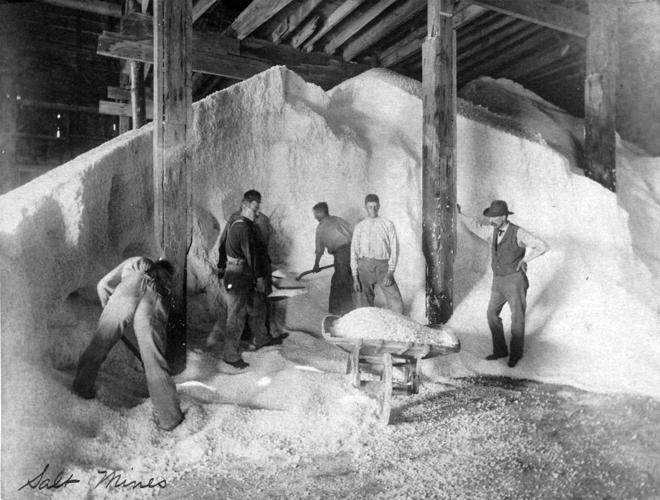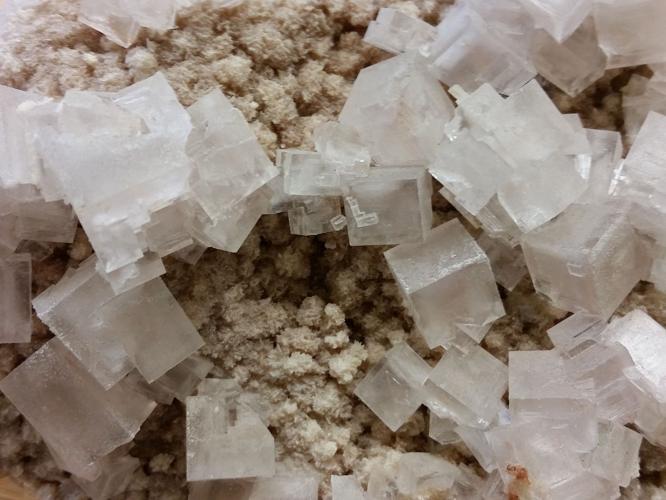To create the white, cubic crystals known as salt, it takes two equal sums of elements: sodium, a reactive metal, and chlorine, a poisonous gas.
A plethora of benefits from salt exist, including its ability to preserve meat by drawing moisture from the microorganisms that cause it to spoil. This attraction for water causes the microorganisms to perish.
Salt is also used for food flavoring, ice cream and gunpowder.
Salt is essential in maintaining proper levels of blood and water in the human body. It is also used to tan leather in boots and saddles, preventing their decomposition.
Salt serves as an important ingredient in the manufacture of roads because of its ability of retaining moisture, holding the clay, gravel, sand and stone together against the weight of millions of automobiles.
Smelter workers ingested salt pills to replace the volume of salt lost in their bodies due to their exposure to high temperatures in the work environment.
Sodium chloride, NaCl, is found in sedimentary beds created by the evaporation of salt lakes and inland seas. It is present throughout Arizona. Its highest concentration — an estimated 285 tons — is located beneath 600 square miles in the Holbrook Basin in Northern Arizona, deposited 250 million years ago in a then-marine environment.
Some of the thickest known salt deposits in Arizona are located north of Kingman and west of Phoenix, and measure between 6,000 feet and 10,000 feet in depth. These were deposited in a nonmarine environment in closed basins 12 million years ago, forming through internal drainage in an arid climate that experienced high evaporation.
Salt has been highly sought after since the days of antiquity.
In 1500 B.C., Egyptians used salt as a means of commerce, fashioning salt bars 8 inches long, 4 inches wide and more than 2 inches thick.
Rome also valued salt 2,000 years ago, maintaining a standing army of soldiers guarding the salt-laden wagon that traversed the 150 mile Via Salaria (Salt Road) connecting the salt-producing seacoast town of Ostia to Rome. The Roman soldiers received salt as part of their payment. Called “salarium,” the word salary is derived from this money.
Over the past several hundred years, salt was instrumental in turning the tide of warfare.
During the Revolutionary War, Gen. George Washington paid a premium cost of eight dollars per bushel of salt to maintain his army.
Napoleon’s 1812 invasion of Russia saw his army’s swift advance outrun his supply wagons, forcing his troops, deprived of food and salt, to retreat 1,000 miles in the Russia winter.
Disease spread rapidly among wounded soldiers because of their lack of salt, one of the factors that led to the death of several hundred thousand French soldiers.
Sixty-two years later, during the Civil War, the Confederate salt works at Saltville, Virginia, hindered by transportation bureaucracy, proved ineffective in its distribution of 100,000 bushels of salt stockpiled for the Southern army and civilians.
Its fall in December 1864, coupled the Union Army’s destruction of salt works along the seacoast from North Carolina to Texas factored into the fall of the Confederacy in the spring of 1865.
Salt was used as a method of negotiation during World War II by American soldiers flying over Asia to obtain help from the locals should they survive after having been shot down.
Arizona has several notable salt deposits discovered through drill holes, gravity modeling and seismic surveys including one that is 1½ miles southwest of Camp Verde in Yavapai County, the Luke salt body, located 15 miles west of Phoenix, and the 2,300-square-mile Supai salt basin near Holbrook.





